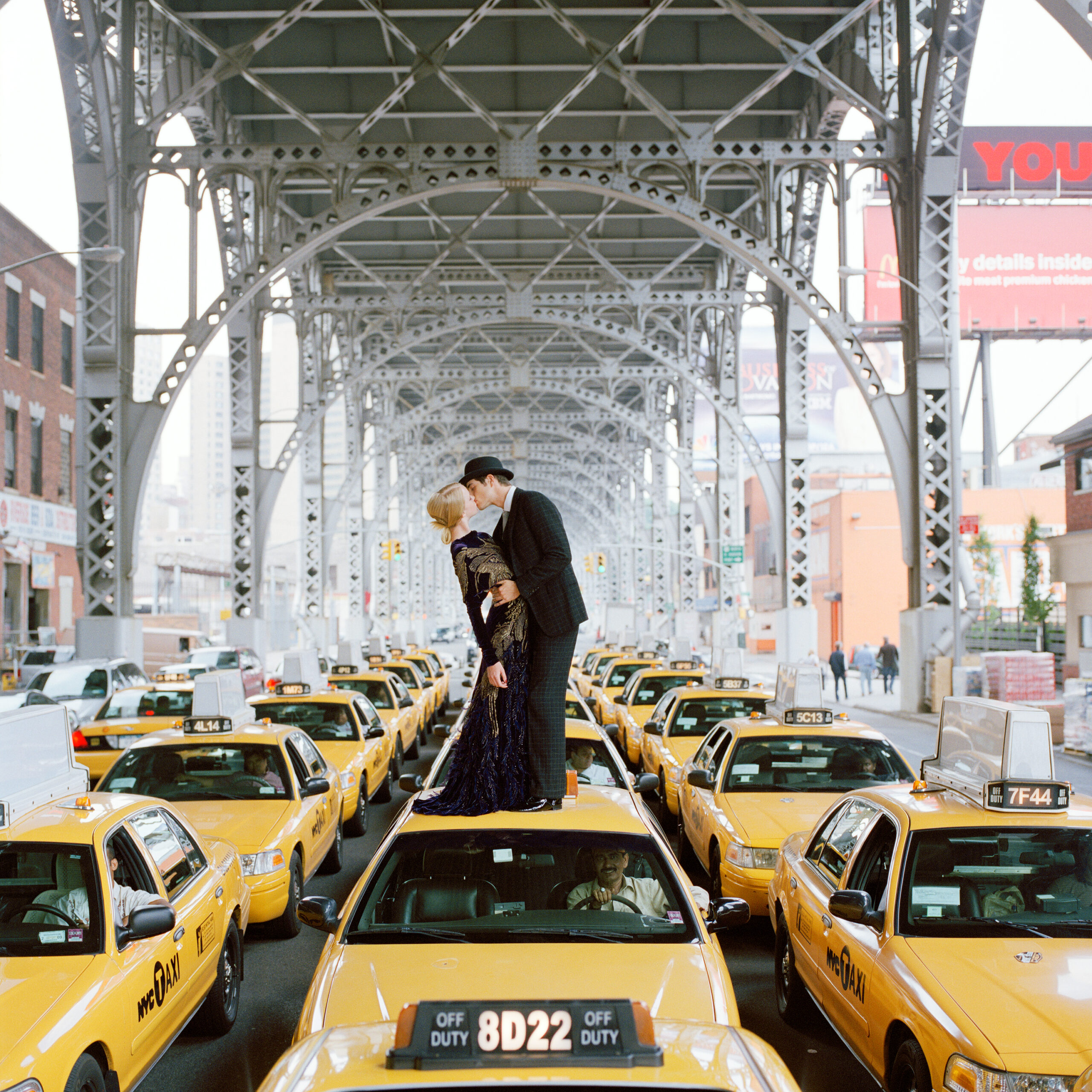Last Updated on 04/26/2023 by Chris Gampat
“This was originally shot for New York Magazine in the summer of 2008,” describes photographer Rodney Smith’s Book The End about, the lead photo of this blog post. “The original concept was to create an essential New York picture and incorporate the great New York icon, the yellow taxicab.” This was a challenge, but they found themselves at 125th Street under the West Side Highway. Then, they actually began the long process of arranging 30 yellow cabs at the right place and at the right time. Of course, this is just one of the whimsical photos of Rodney Smith.
All images by Rodney Smith. Used with permission. The lead image is Edythe and Andrew Kissing on Top of Taxis, New York, New York, 2008. Be sure to pick up Rodney Smith: A Leap of Faith if you like the photos.
A new book entitled Rodney Smith: A Leap of Faith is now in stores and features many of his unpublished images and many of his famous ones! They include a mix of spontaneously done photos, and others look Irving Penn-style.
But most important is composition. Composition is to photography what rhythm is to music. It is about symmetry and proportion, resonance between the photographer and subject; where everything fits just so. Almost like iambic pentameter in poetry, or natural cadence. This picture represents not only everything in its right place, but also the right proportion, the right relationship, the right cadence. Composition is seriously lacking in most photography in the 21st century. It has been abandoned—whether it’s lack of skill or lack of interest I’m not sure but losing the composition is synonymous to having an irregular heartbeat.
Rodney Smith: The End in reference to the lead image
Let’s look at some of his iconic photos and some that stand out!
Table of Contents
A Look Through the Images of Rodney Smith
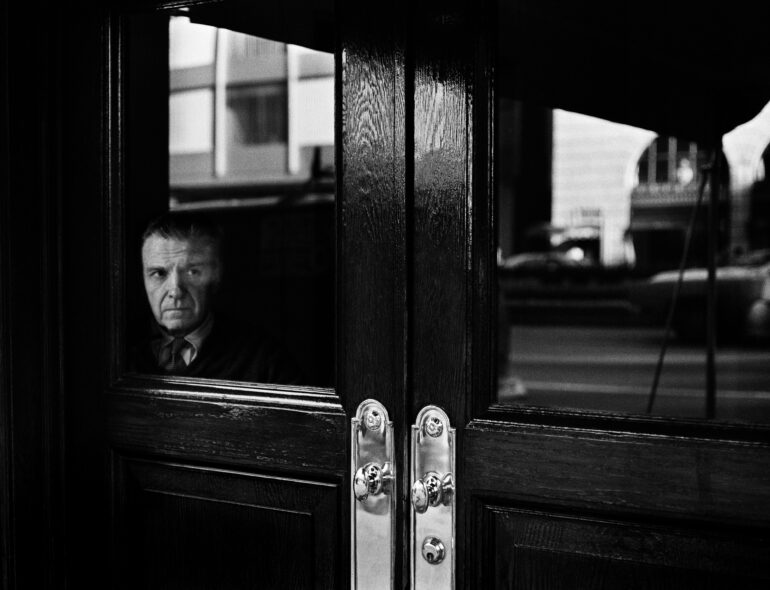
“This photograph, taken in 1971, is one of the first where Rodney recognized he had the talent to become a photographer,” says Leslie Smolan, Executive Director of the Estate of Rodney Smith and Rodney’s widow. But there’s much more to the story than that. Rodney studied theology and photography at Divinity School at Yale University.
For Rodney, the photo spoke about wealth and privilege. “The doorman peers out of an exclusive apartment building. He is inside, but he is only there to serve, to keep the people who do not belong out,” says Paul Martineau, Getty Curator of Photographs from Leap of Faith. For him, the highly polished brass door plates and knobs help to ground the image, visually speaking.
Doorman, Park Avenue, was chosen by the Portland Museum of Art, Portland, Maine, for their permanent photography collection. And stories, like the one of the doorman, are fascinating because many of us otherwise probably wouldn’t be able to look that deeply into the frame and pull this information out.
Rodney Smith spent time studying photographer W. Eugene Smith. He felt his prints had a ton of emotional resonance and intensity. Beyond that, he also spent time studying Ansel Adams on the technical side. A marriage of the two work styles coupled with his learnings at Divinity gives us Rodney’s unique vision.
For most of his work, Rodney shot mainly with a Hasselblad 501cm and a Mamiya 6×7 Rangefinder. Earlier, he loved shooting with a Leica camera and natural light as much as possible. Occasionally, he used reflectors or a continuous light source HMI when natural light wasn’t possible.
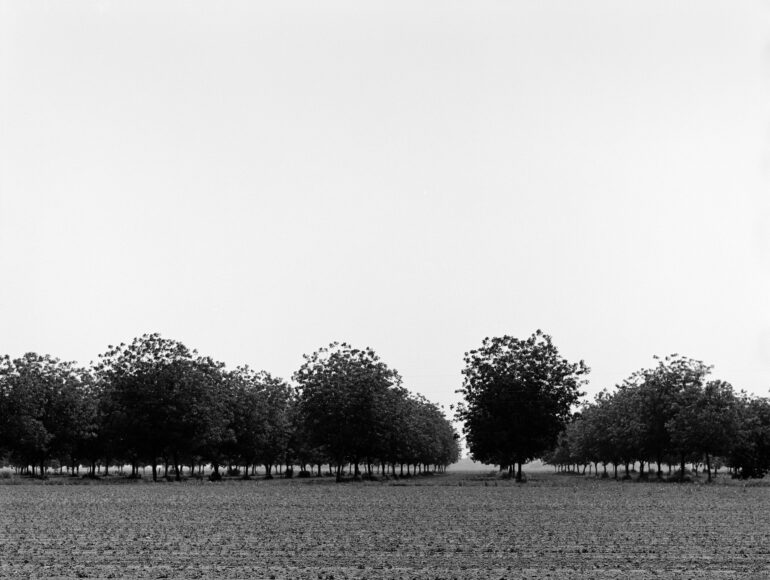
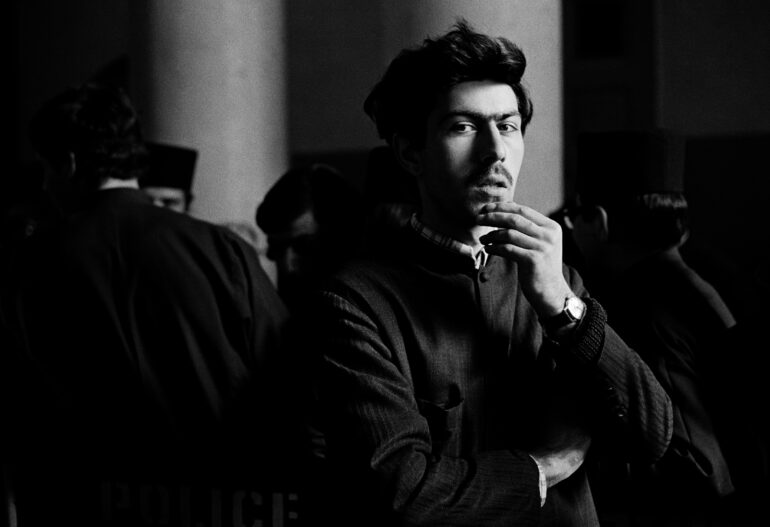
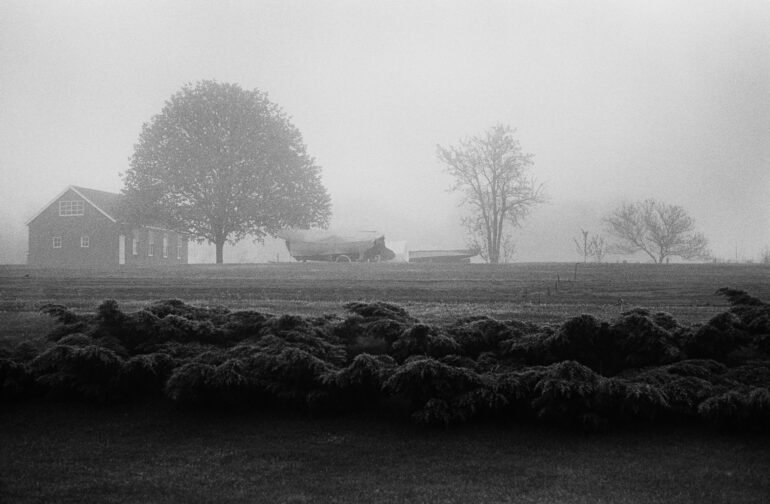
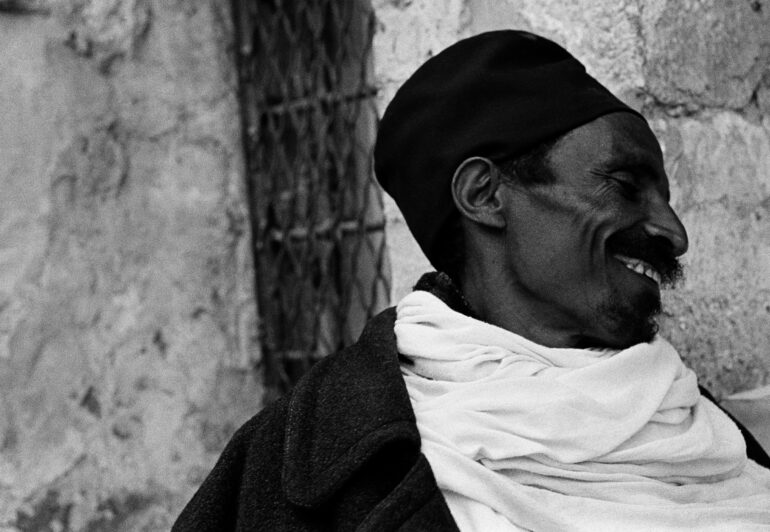
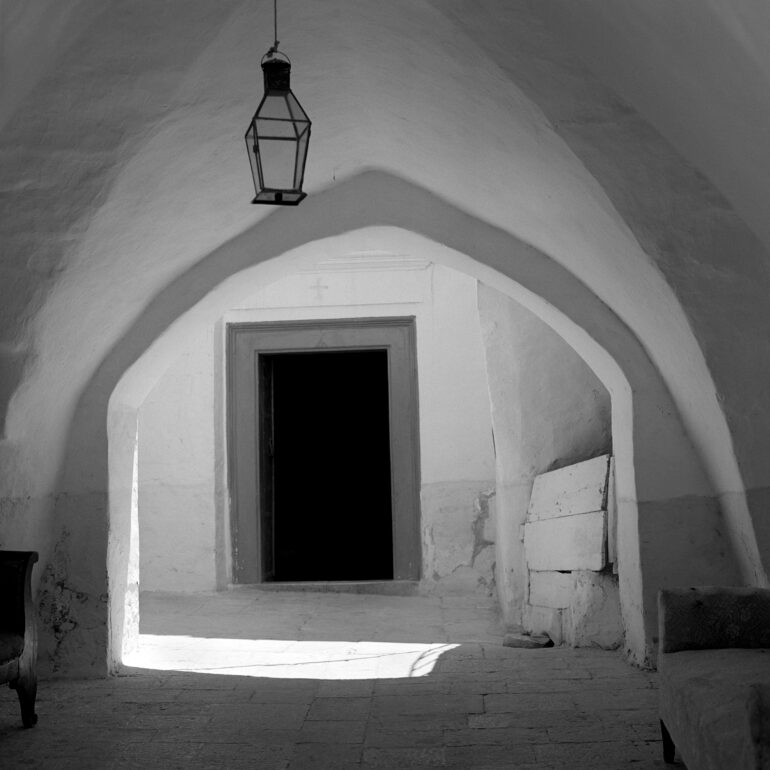
Some of Rodney’s work is far more iconic than others, and it seems like in this new book, we’ll be able to understand a lot of the mentality and psychology of how and why he made the photographs he did. For example, some of us that might not have studied his work so intently probably don’t know about his earlier landscapes or portraits. “The strength of the image comes from his exquisite sense of composition and the quality of the light, two elements that are a signature of his work,” says Leslie.
A few of these images were shot during his visit to Jerusalem. During those nearly 100 days, he accompanies photographer Dominique Nabokov to the Armenian compound for their Orthodox Easter Service. He found that time to be the most photographically productive day of his life. In fact, it’s apparently one of the few times where Rodney feels he felt spiritually whole.
Portraits of Heinz CEOs and the Mid-Career
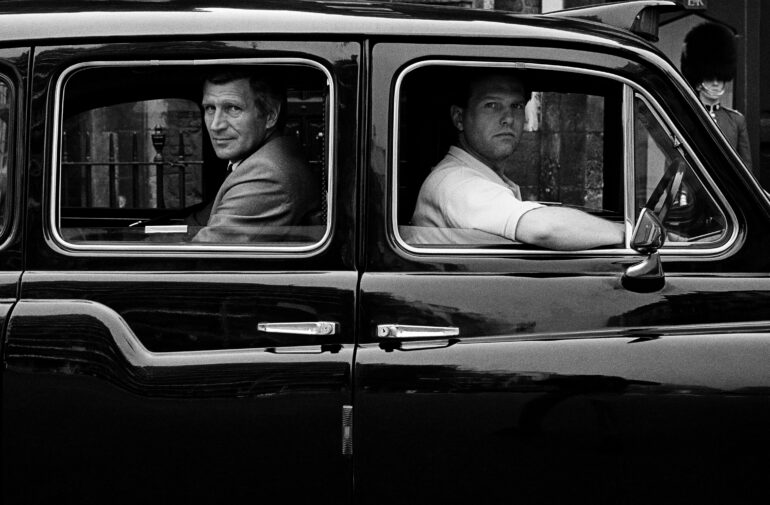
John Hinch in Cab, London, England, 1987
Rodney’s assignment to photograph Heinz Company CEOs worldwide was one he called “quite a gift.” In fact, Leslie says that his photographs changed the nature of corporate portraiture forever.
The oddity about this project is that Rodney was told that he couldn’t be close to the subject and couldn’t show their environment. Essentially, he couldn’t make environmental portraits for the company CEOs. It taught him not to stand someone in front of an object like the Eiffel Tower or Big Ben: which seems simple enough today! “I realized that all the years of shooting landscapes and portraiture as separate entities could now finally be united,” says Rodney in his book The End. “This was the beginning of the middle phase of my career.”
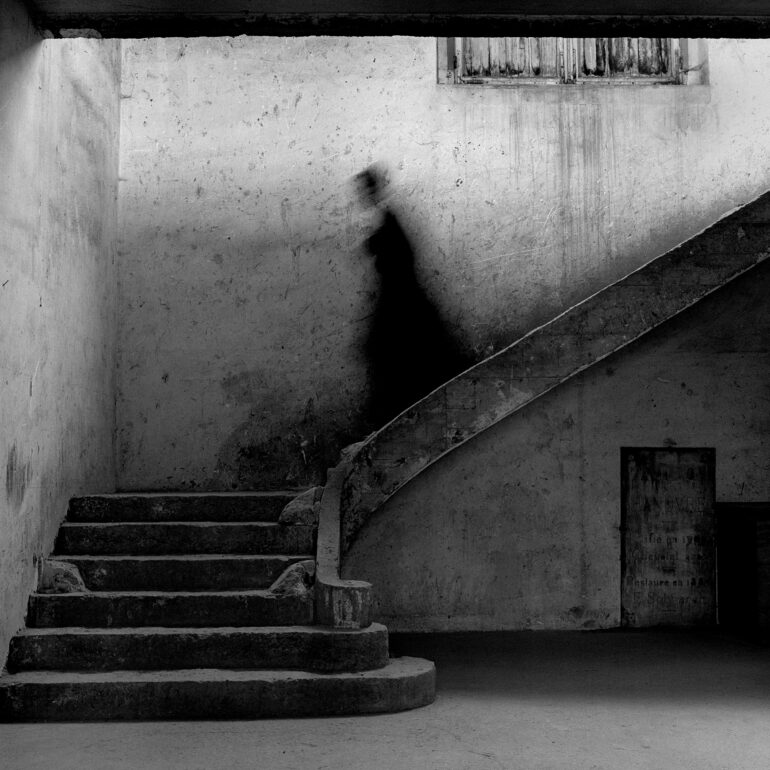
Looking at the image Gary Descending Staircase, Parc de Sceaux, France, 1995, it seems like something we might’ve seen from Bresson or some other photographer from an early era. Undoubtedly, it’s a beautiful and haunting image. According to Leslie, Rodney shot this photo for himself while on assignment for W Magazine in Paris. “Despite the picture seeming so composed, it was extremely spontaneous,” she says. This lines up with what Rodney says in his book.
Here’s the relevant quote:
“First, I have found that when I am able to let go the most, my pictures are the best. This was shot in Paris, at an old building on the grounds of a French Royal Garden called Parc de Sceaux. We were just leaving and as I saw the model, dressed in a robe, descending this beautiful staircase. I asked him to run down the stairs once more. I snapped a few frames. It couldn’t have taken longer than a couple of minutes, and it ended up being my favorite picture from the whole shoot. Many of my pictures look carefully planned out; however, it is often the spontaneity of the moment that creates great photographs. For this reason I do not shoot Polaroids and I do not shoot digitally.”
Rodney smith: The End
Of course, what’s old is new again, and photographers love incorporating blur into their work as much as possible. It’s a trend!
Rodney’s Sense of Fun
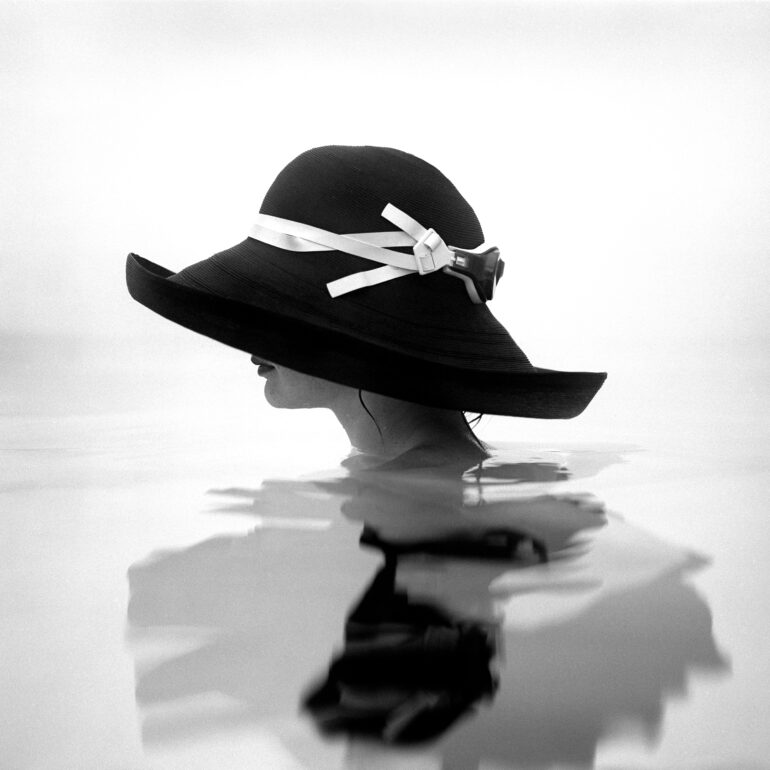
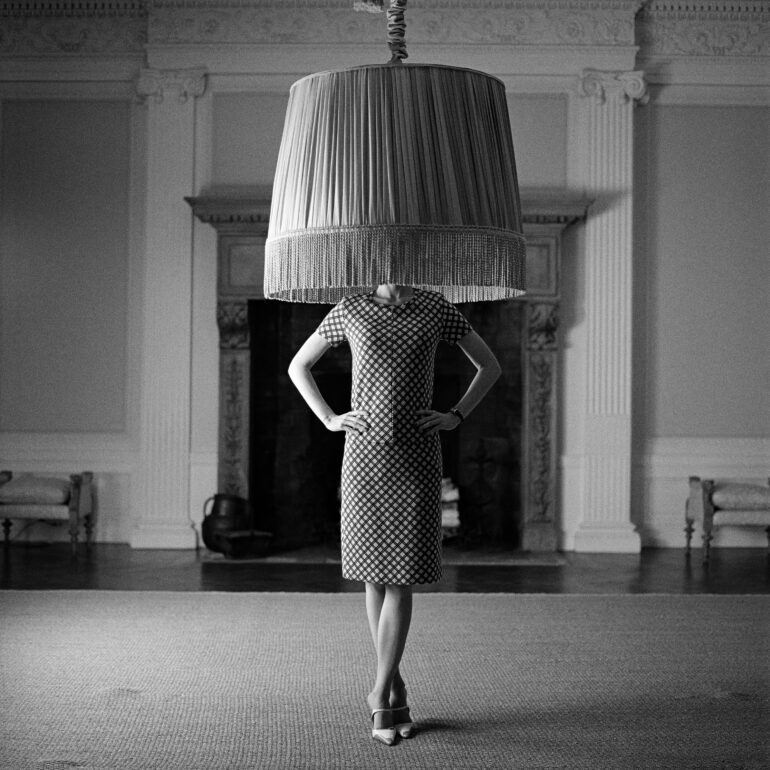
Of course, Rodney also incorporated a sense of fun into his work. There are many photos where faces aren’t seen. And to many of us, these are some of his most iconic pieces. “Viktoria Vamosi is a beautiful woman — a top international model, — yet Rodney responded to her inner beauty, her intelligence, and her sense of fun,” says Leslie. Further to the point, Rodney said his photos play with time and space. Uniquely enough, the ideas have been mimicked many times over and over.
“A great photograph must never answer all the questions, otherwise, you would never be drawn back to it,” says Rodney in The End. “It must continually remain unresolved. It must draw you back.”
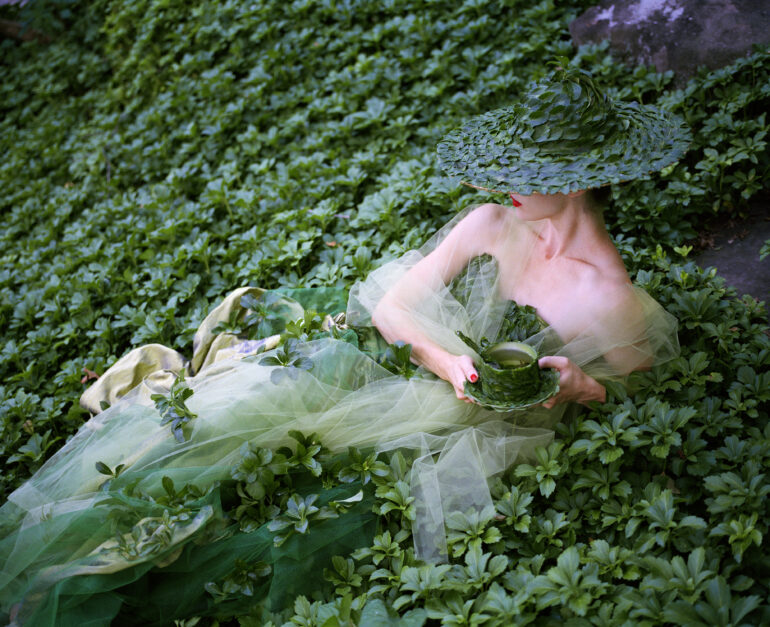
Part of what added to Rodney’s surrealism is stylist Renate Lindlar — the designer of many of the dresses and props in Rodney’s images. Lindlar was a big part of how Rodney channeled his whimsical approach.
“In the end, the strength of Rodney Smith’s photographs lies in their complete synthesis of the formal clarity and technical skill of early twentieth century European photographers, the more personal relationship between subject and photographer of their American peers, and the embrace of the accidental, the marvelous, and the spontaneous advocated by the Surrealists.”
From curator Jonathan Stuhlman
Rodney’s ideas and concepts around not showing faces and creating surreal scenes continue on in his career. Indeed, when you look through, it’s easy to ask yourself many questions. As I look at the image below, I think a lot about the old twin towers and how this image would’ve probably looked in color.
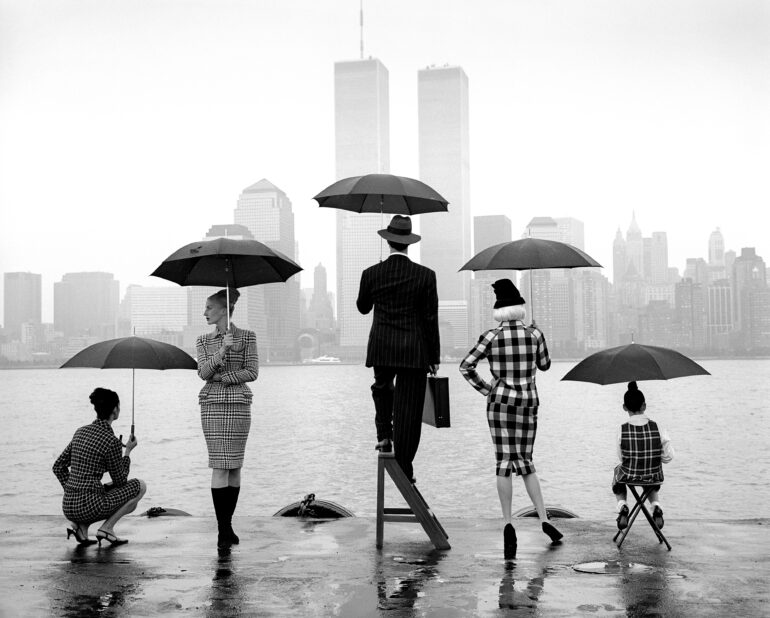
Skyline, shot in the Spring of 1995, was commissioned by the New York Times Magazine. After doing the Hemline and Airline photos for them, he was asked to shoot Skyline. The only directive was to have the New York skyline in the picture.
They secured a large barge to put them all in the middle of the Hudson River separating New Jersey and Manhattan. It was raining, and Rodney always felt that rain made things enigmatic, dimensional, and unresolved. Despite being asked to reschedule the shoot, he pressed on.
After getting the barge in place, everyone got dressed quickly. He waited for the right moment when the man’s hat fell between the Twin Towers. Then he shot a few frames, and the job was done. In Rodney’s career, he felt most connected to the moment when shooting it.
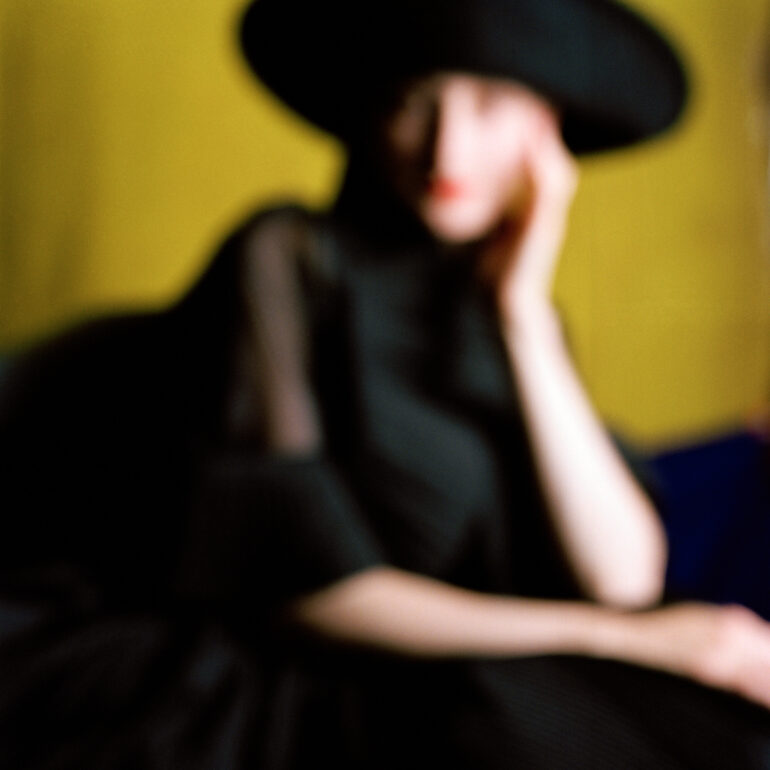
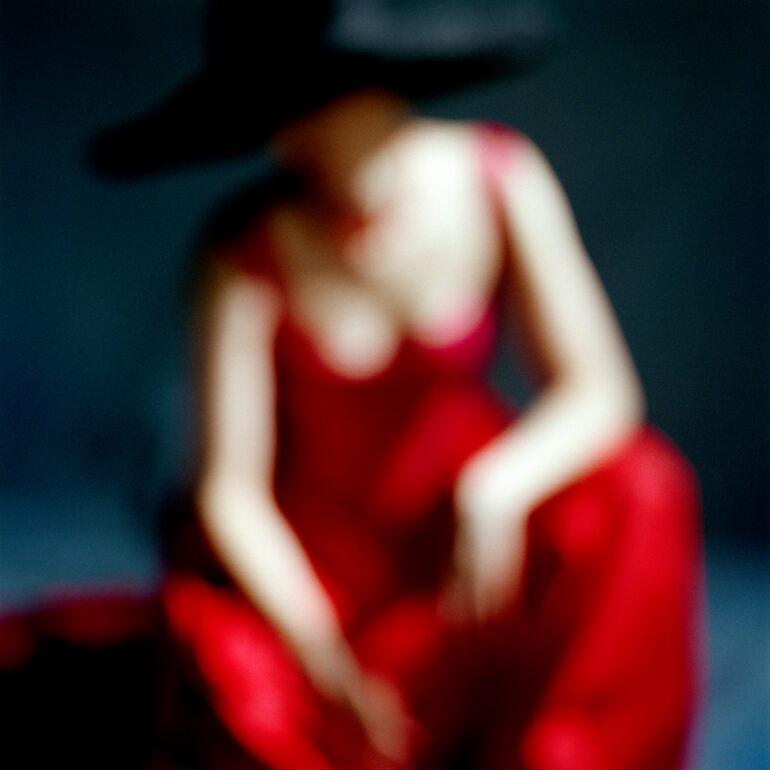
Rodney did photos where faces weren’t showing, and he is famous for a set of out-of-focus images. We test gear as a significant part of what we do here on the Phoblographer. And it’s fascinating; if we ever did this, our readers and other journalists would be distraught. But to Rodney, this was a faithful rendering of his vision.
Something so stark about these images is that they’re in color. He declined to do it until 2002 when he realized that digital prints were so good that you couldn’t tell the difference between what was made in a darkroom and from a print.
“Inspired by Sarah Moon and many painters he admired (Vermeer, John Singer Sargent, Edward Hopper), he shot these out-of-focus portraits against a seamless backdrop, creating large areas of painterly color,” says Leslie. The images look like paintings and precisely as they’d appear to someone not wearing glasses with blurry eyesight.
The Sweet Story of Leslie’s Favorite Photo
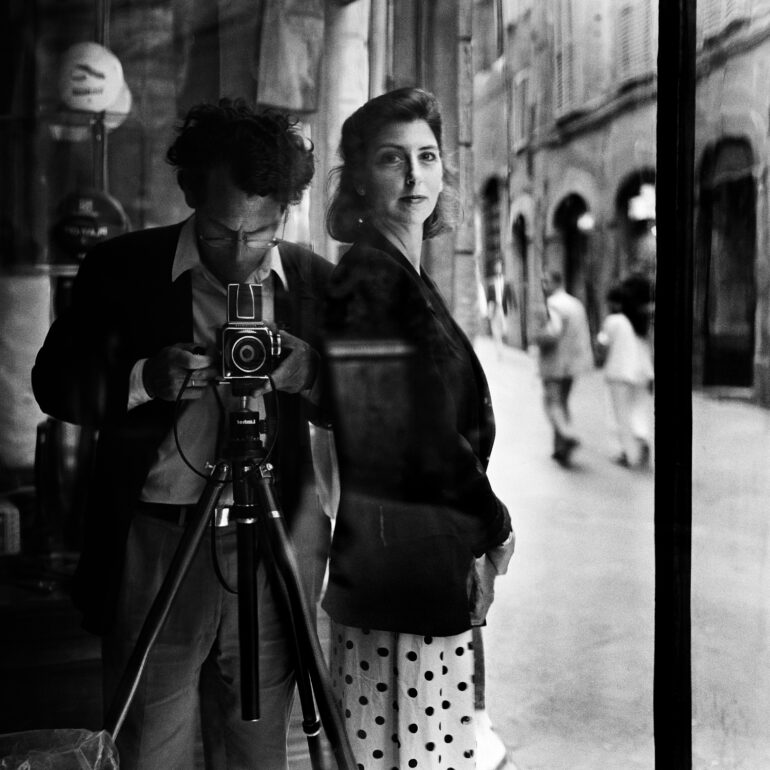
One charming photo of Rodney and Leslie together is her favorite image that he’d shot. The photo is from their honeymoon in 1990. “Rodney had an uncanny ability to see people and recognize what lay beneath the surface,” she states. “He understood me better than I understood myself. He saw the delicate, gentle, and caring person inside, as well as the independent, powerful, no-nonsense businesswoman on the outside. Rodney gave me the confidence to leap, to take chances, and trust my intuition.” Further, it reminds her a lot of what Rodney did often — putting his head into the viewfinder of his camera. All the while, his wild hair and stylish appearance are front and slightly off-center.


